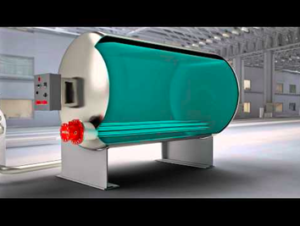Heat Transfer: Immersion Heaters in the Food Industry
Last updated on March 15th, 2024 at 03:10 pm
 Immersion heaters represent a near-necessity for food processing and the food industry in general. Industrial level immersion heaters are a great option for industry leaders, as they represent an efficient addition to manufacturing and processing methods across many industrial applications, including food processing. Essentially, industrial immersion heaters are efficient tools that quickly heat up liquids, solutions and substances in large pressure vessels, tanks or other industrial-sized containers.
Immersion heaters represent a near-necessity for food processing and the food industry in general. Industrial level immersion heaters are a great option for industry leaders, as they represent an efficient addition to manufacturing and processing methods across many industrial applications, including food processing. Essentially, industrial immersion heaters are efficient tools that quickly heat up liquids, solutions and substances in large pressure vessels, tanks or other industrial-sized containers.
The use of direct heat transfer in immersion heaters means that the substance quickly reaches its target temperature and is easily maintained at this level. Because immersion heaters commonly consist of external parts and mechanics, introducing them into an industrial setting is relatively straightforward. Furthermore, this makes the maintenance requirements for electric immersion heaters minimal.
While there may be many applications for electric immersion heaters, the food industry in particular can benefit from the appropriate adaptation of these heating elements. There are three main types of electric immersion heaters: screw plug heaters, flanged heaters, and over-the-side heaters to name a few.
All three of these main types have potential in the food processing industry. Screw plug heaters (also known as threaded immersion heaters) are easy to handle and best used for corrosive materials because of the airtight fit. Flanged heaters are welded into the holding container, so they are most commonly used in processes that require high pressure. Over-the-side heaters are commonly used with tanks and other open containers, in applications that require the substance to be maintained at the same temperature for a long period of time.
 In the food industry, electric immersion heaters are most commonly used in high pressure and fluid heating processes. This includes everything from basic hot water storage tanks to the equipment required for preheating in the food industry. More specialized applications are:
In the food industry, electric immersion heaters are most commonly used in high pressure and fluid heating processes. This includes everything from basic hot water storage tanks to the equipment required for preheating in the food industry. More specialized applications are:
- Boiler integrations
- Prevention of liquid substance freezing
- Flow system heat maintenance
- Heating of high-grade cooking oil
- Flow systems’, pressure vessels’, and other containers’ cleanliness maintenance
There are several parameters to consider when selecting an electric immersion heater for the food processing industry. To begin with, it’s important to have an adequate grasp of the technical features and characteristics of immersion heating elements. More specifically, consider three major parameters.
- know the material of which the sheath and heater are made.
- Consider the external design of the immersion heater system; that is, whether the heating element has fixed parts or can be taken apart fairly easily, how the heater can be maintained, etc.
- Know that two specific materials (copper and steel) work best for food-related processes and equipment. In addition to these considerations, there are several internal factors that affect the heating quality of each immersion heater, including everything from viscosity to impurities to maximum heat resistance.
